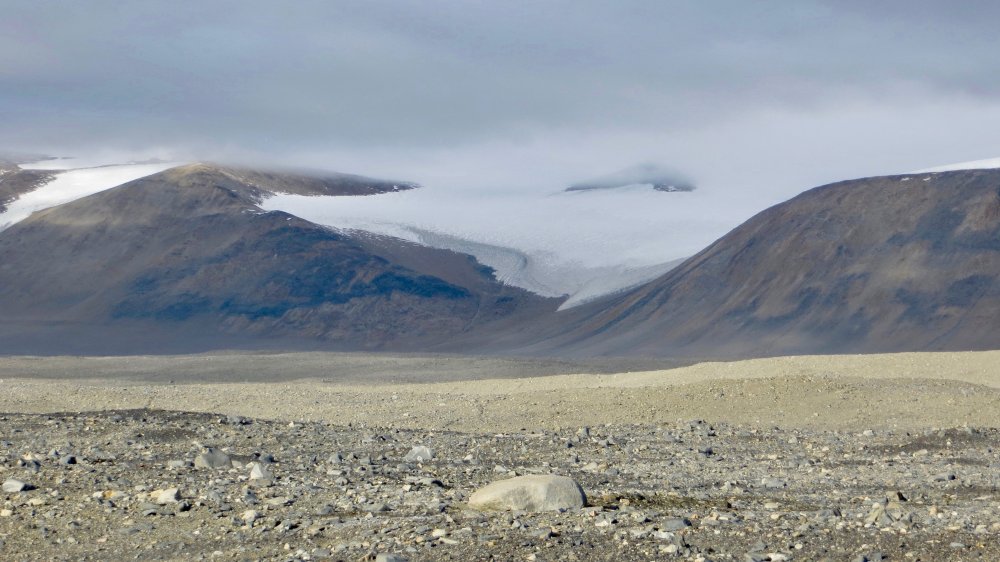When Is It Too Cold To Snow?
We're now well into fall and before you know it, the cold winter weather will be here. Time to get out the gloves, beanies, and thick, down jackets. Time to load the fireplace up with logs and curl up next to it in a warm blanket and sip a cup of hot chocolate. Time to deal with that annoying guy who is always sticking his tongue out on frigid winter morning and, like some sort of Merlin-turned-meteorologist, exclaims, "No, it's not gonna snow today. Too cold."
What's with this guy? Does he really know what he's talking about? Does he have some kind of esoteric knowledge on atmospheric conditions to which the rest of us are absolutely clueless? Next time you're in this situation, try asking him, "Exactly when is it too cold to snow? Isn't cold an explicit climatic requirement in order for it to snow?" According to Matt Peroutka, a National Weather Service meteorologist, you're right. "Yes. It has to be cold for it to snow," he told Scientific American in 1999. Ha! You've got him, right? And you've got the word of a weather scientist to prove it!
Well, not so fast. Although cold is definitely a requirement for snow, there is a bit of nuance in the process that kind of lends a bit of credence to your irksome pal's prediction.
Sometimes it kinda is 'too cold' to snow
Of course, there was a "but" in Peroutka's answer: "But the atmosphere must contain moisture to generate snow — and very cold air contains very little moisture." In reality, both you and your friend are both right and wrong. It can and can't be too cold to snow. According to The Weather Channel, "heavy snowfalls are much less likely to occur when the mercury drops well below freezing, especially below 0°F." In order for snow to fall, three specific conditions need to be present in the atmosphere: cold temperatures, moisture, and rising air.
The first condition is pretty obvious, but those last two criteria are very difficult for the atmosphere to achieve when the first one dips down into the realm of the really-no-that's-just-too cold. Air gets drier the colder it gets, because its capacity to hold moisture is much lower than that of warmer air. Those of us meant for balmier climes may not be able to tell the difference between 30°F and 0°F, but the air sure can. It is only able to hold about a seventh of the water vapor at zero than it can at 30. And, as the old adage goes: Hot air rises. If the air near the Earth's surface is super cold, it's more stable and isn't going up until the temperature does.
There is an extremely cold part of Antarctica that receives almost no snow
When we think of Antarctica we think of snow and ice blanketing the frigid continent. And we think that because, well, it's cold. It must snow everywhere there, right? Not necessarily. According to Oceanwide Expeditions, Antarctica's McMurdo Dry Valleys are the continent's largest expanse of ice-free (Antarctically speaking) land. The Dry Valleys are extremely cold, but the air in them almost completely lacks moisture, and any humidity that dares to get near them gets swept away by strong winds that ensure that the only frozen water in the valleys is in the form of lake ice and alpine glaciers. These winds, called katabatic winds, are strong, dry, cold, and downward-moving — the complete opposite of the warm, wet uplift of air necessary for snowfall.
The aptly named Dry Valleys are a unique area in an already peculiar environment, making them of particular interest for scientific research. They were first discovered by British explorer Captain Robert Falcon Scott in 1903. According to the McMurdo Dry Valleys Long Term Ecological Research Project, Scott initially believed them to be nothing more than lifeless tracts of cold rock. "We have seen no living thing," wrote Scott, "not even a moss or lichen ... it certainly is the valley of the dead." A century later, however, scientists living in Antarctica now know that Scott was mistaken, and the valleys are home to mosses, lichens, algae, and even small wormlike creatures called nematodes.


